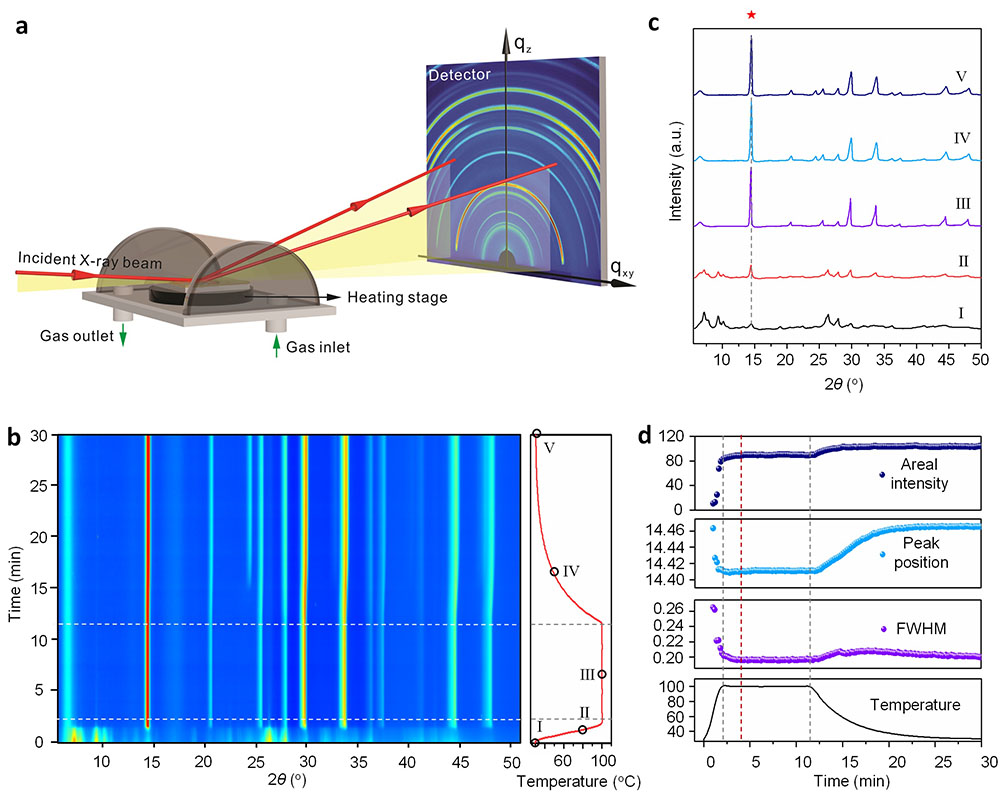The direct conversion of solar energy to electrical power is widely regarded as a key technology to tackle the energy crisis in a sustainable manner. Among innovative technologies, metal halide perovskite solar cells (PSCs) have advanced to the forefront of solution-processed photovoltaic techniques, promising for high power conversion efficiency and low cost. Currently, the technique involving the formation of intermediate adduct (IA) phases is extremely effective in fabricating highly uniform and dense perovskite films. It is regarded as one of the most successful ways to fabricate state-of-the-art PSC devices. Despite its apparent simplicity and success, the exact mechanism for the formation of perovskite films from IA phases is yet ambiguous. In addition, the solvent vapor atmospheres (SVAs) during/post the annealing process could also greatly affect the quality of the resultant perovskite films. It is thus of vital importance to understand the interaction mechanism between different SVAs and perovskite films.
A team led by Assistant Professor Chen Gang at ShanghaiTech University has performed synchrotron-based in situ grazing-incidence X-ray diffraction investigations, facilitated by other techniques, on the formation of the widely adopted MAPbI3 (MA = methylammonium) perovskite films from their IA phases. The influences of SVAs on MAPbI3 films are also systematically investigated, where the dynamic conversion processes between different phases are visualized in real time. All the measurements are carried out in a custom-made in situ characterization cell capable of replicating the conditions used in the standard perovskite film preparation. This in situ real-time study enables an exclusive view of the perovskite formation and conversion processes, which provides direct insights into the film growth mechanism and offers practical guidance to improve film qualities.
Professor Chen points out that, unlike ex situ methods that can only provide discrete and indirect information, the in situ real-time study is able to present a panoramic view of the structural evolution of perovskite films. This comprehensive understanding of the reaction mechanism of perovskite films could shed light on the preparation of highly efficient PSCs and other optoelectronic devices with excellent perspectives.
Read more at: http://onlinelibrary.wiley.com/doi/10.1002/adma.201706401/full

Fig. 1: The in situ GI-XRD experimental setup and the growth process of perovskite films in nitrogen

Fig. 2: The in situ GI-XRD and FTIR measurements
- About
- News
- Faculty
-
Academics
- School of Physical Science and Technology (SPST)
- School of Life Science and Technology (SLST)
- School of Information Science and Technology (SIST)
- School of Entrepreneurship and Management (SEM)
- School of Creativity and Art (SCA)
- Institute of Humanities (IH)
- School of Biomedical Engineering (BME)
- Shanghai Institute for Advanced Immunochemical Studies (SIAIS)
- iHuman Institute
- Institute of Mathematical Sciences (IMS)
- Center for Transformative Science (CTS)
- Institute of Carbon Neutrality (ICN)
- Shanghai Clinical Research and Trial Center
- Tech Transfer
- Global
- Campus Life

